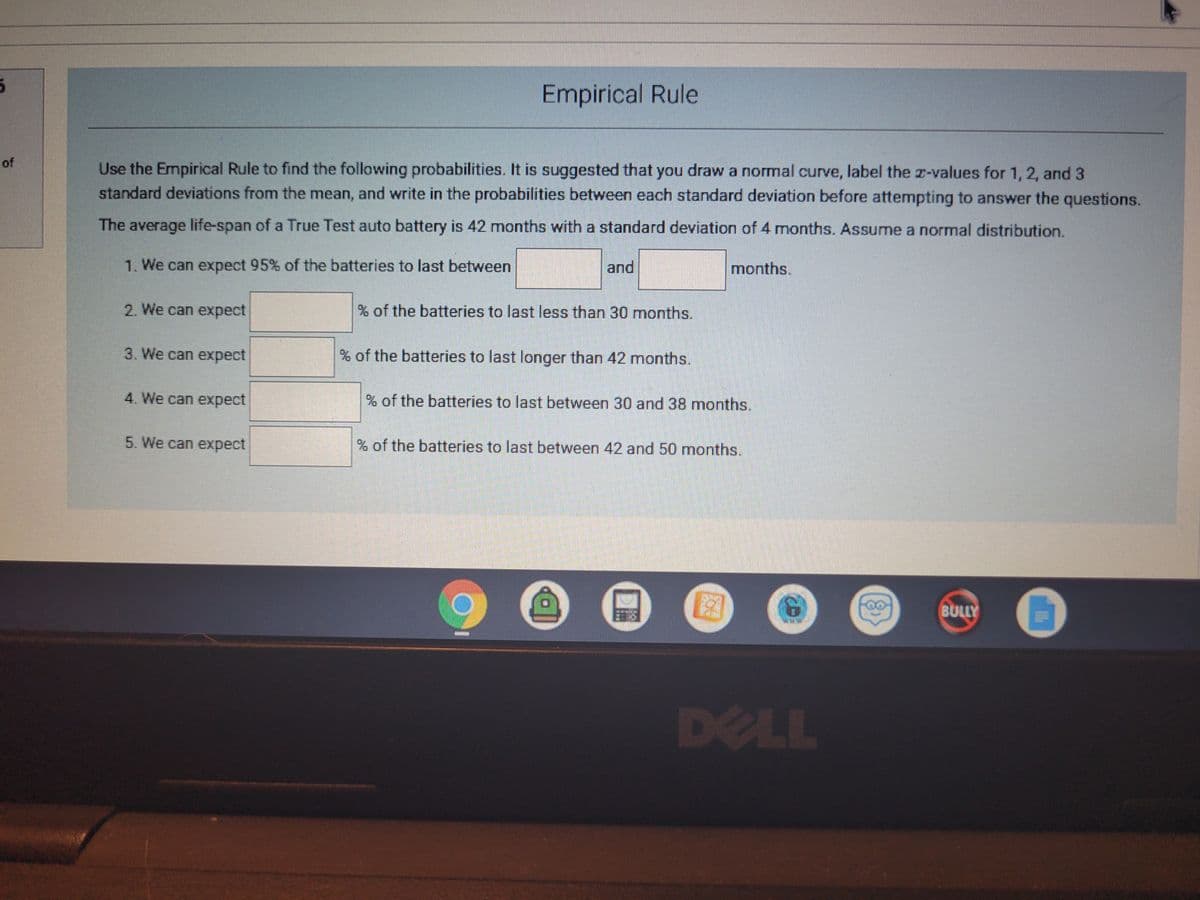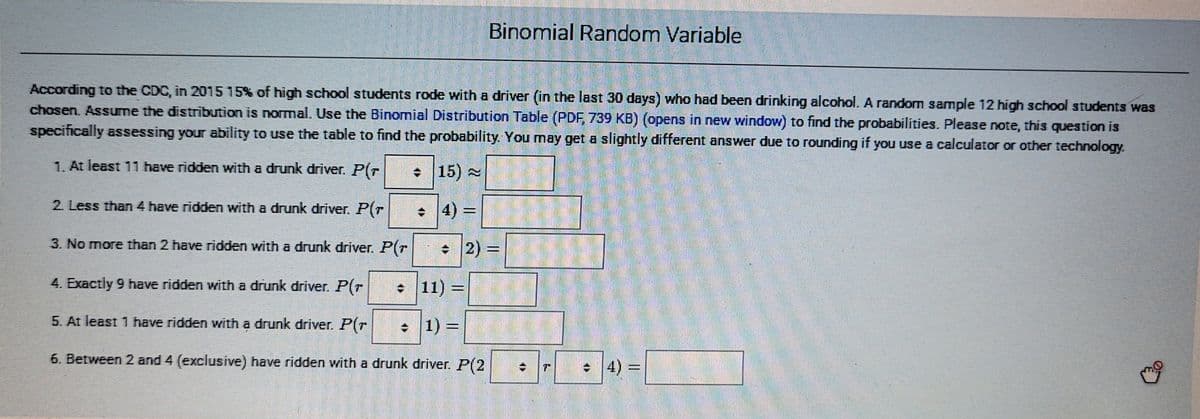Use the Empirical Rule to find the following probabilities. It is suggested that you draw a normal curve, label the z-values for 1, 2, and 3 standard deviations from the mean, and write in the probabilities between each standard deviation before attempting to answer the questions. The average life-span of a True Test auto battery is 42 months with a standard deviation of 4 months. Assume a normal distribution. 1. We can expect 95% of the batteries to last between and months. 2. We can expect % of the batteries to last less than 30 months. 3. We can expect % of the batteries to last longer than 42 months.
Use the Empirical Rule to find the following probabilities. It is suggested that you draw a normal curve, label the z-values for 1, 2, and 3 standard deviations from the mean, and write in the probabilities between each standard deviation before attempting to answer the questions. The average life-span of a True Test auto battery is 42 months with a standard deviation of 4 months. Assume a normal distribution. 1. We can expect 95% of the batteries to last between and months. 2. We can expect % of the batteries to last less than 30 months. 3. We can expect % of the batteries to last longer than 42 months.
College Algebra
7th Edition
ISBN:9781305115545
Author:James Stewart, Lothar Redlin, Saleem Watson
Publisher:James Stewart, Lothar Redlin, Saleem Watson
Chapter9: Counting And Probability
Section9.3: Binomial Probability
Problem 33E: Sick leave probability that a given worker at Dyno Nutrition Will call in sick on a Monday is 004....
Related questions
Topic Video
Question
Need help please.

Transcribed Image Text:Empirical Rule
of
Use the Empirical Rule to find the following probabilities. It is suggested that you draw a normal curve, label the z-values for 1,2, and 3
standard deviations from the mean, and write in the probabilities between each standard deviation before attempting to answer the questions.
The average life-span of a True Test auto battery is 42 months with a standard deviation of 4 months. Assume a normal distribution.
1. We can expect 95% of the batteries to last between
and
months.
2. We can expect
of the batteries to last less than 30 months.
3. We can expect
of the batteries to last longer than 42 months.
4. We can expect
% of the batteries to last between 30 and 38 months.
5. We can expect
% of the batteries to last between 42 and 50 months.
BULLY
DELL

Transcribed Image Text:Binomial Random Variable
According to the CDC, in 2015 15% of high school students rode with a driver (in the last 30 days) who had been drinking alcohol. A random sample 12 high school students was
chosen. Assume the distribution is normal. Use the Binomial Distribution Table (PDF, 739 KB) (opens in new window) to find the probabilities. Please note, this question is
specifically assessing your ability to use the table to find the probability. You may get a slightly different answer due to rounding if you use a calculator or other technology
1. At least 11 have ridden with a drunk driver. P(r
+ 15)
2 Less than 4 have ridden with a drunk driver. P(T
4) =
3. No more than 2 have ridden with a drunk driver. P(T
+ 2) =
4. Exactly 9 have ridden with a drunk driver. P(r
• 11)
%3D
5. At least 1 have ridden with a drunk driver. P(r
• 1) =
%3D
6. Between 2 and 4 (exclusive) have ridden with a drunk driver. P(2
•
4)% =
Expert Solution
This question has been solved!
Explore an expertly crafted, step-by-step solution for a thorough understanding of key concepts.
This is a popular solution!
Trending now
This is a popular solution!
Step by step
Solved in 3 steps with 1 images

Knowledge Booster
Learn more about
Need a deep-dive on the concept behind this application? Look no further. Learn more about this topic, probability and related others by exploring similar questions and additional content below.Recommended textbooks for you

College Algebra
Algebra
ISBN:
9781305115545
Author:
James Stewart, Lothar Redlin, Saleem Watson
Publisher:
Cengage Learning

College Algebra
Algebra
ISBN:
9781305115545
Author:
James Stewart, Lothar Redlin, Saleem Watson
Publisher:
Cengage Learning